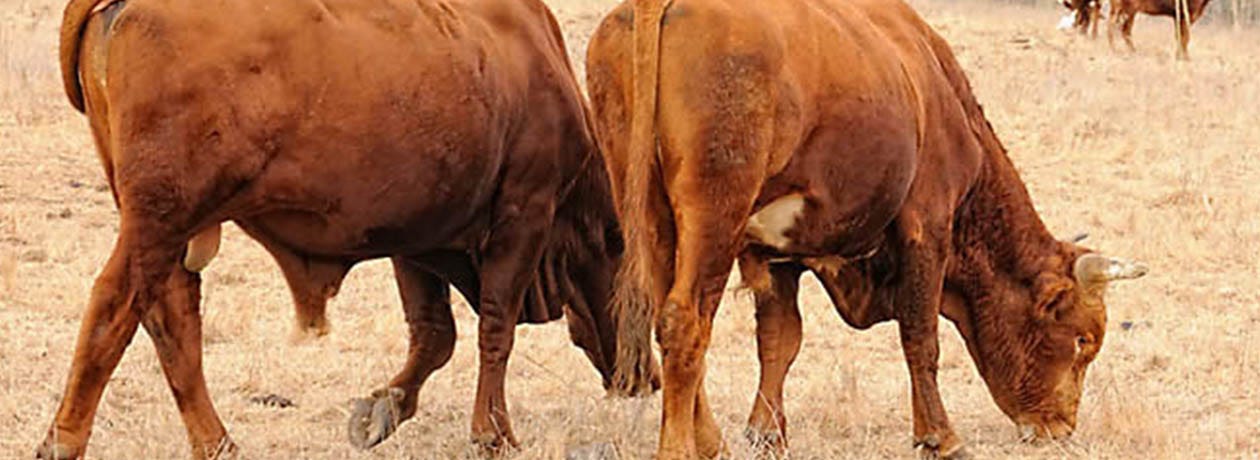How to Ground an Electric Fence When There is Dry, Rocky or Sandy Soil

If a fence is failing to deliver a significant shock, it may be that you need to rethink your ground rod system by adding more rods or adjusting their placement. When it comes to keeping an electric fence performing well, the soil conditions are going to be a key factor. If the soil is too dry, too sandy or too cold, the fence may not operate at its peak and, in some cases, it may not operate at all. Fence problems related to improper or ineffective grounding are common, and by working around soil conditions you may eliminate any fence-performance issues as well.
How an Electric Fence Works
An electric fence works by completing an electrical circuit whenever an animal touches the fence. The electricity passes through the animal into the soil and back to the ground rods, which are connected to the ground terminal of the fence charger. This action creates a complete circuit and is responsible for the momentary electrical shock the animal feels.
In some cases, soil quality can be responsible for an improperly functioning ground system. Very dry, rocky, or sandy soil conditions will require additional ground rods due to increased resistance. “Resistance” refers to how strongly a given material opposes the flow of an electrical current. In the case with soil, low resistance means the soil readily allows the movement of electric current. High electrical resistance from the soil makes it more difficult for the electrical circuit to be completed.
What Increases Electrical Resistance in Soil?
The increase in soil resistivity seen in poor soil conditions is due to three characteristics: Low moisture content, chilly soil temperature and general soil type.
- Moisture Content - Soil moisture helps liquids in the soil that surround ground rods carry electrical current. In general, soils with higher moisture content will have a lower soil resistivity. This means the soil will readily allow movement of an electric charge. In dry or sandy soils (with less than 10% moisture) resistivity is much higher, making it more difficult to establish an effective ground.
- Soil Temperature - Cold temperatures, especially below freezing, is another thing that will increase electrical resistance in soil. In addition, when moisture in the soil turns to ice, resistivity will rise sharply. To combat this in areas where freezing conditions are common, ground rods should be driven below the frost line (>4 feet deep) to maintain a low-resistance ground.
- Soil Type -Soils with high organic matter content are the best conductors because of their higher moisture content and electrolyte levels. Dry, rocky and sandy soils, on the other hand, drain faster, which decreases the soil moisture content and electrolytes. These poor conditions lead to a higher impedance and resistivity, making effective grounding difficult to achieve.
- Install Multiple Ground Rods -While most fences will need three grounding rods, longer fences and areas with poor soil conditions will require more. Multiple rods should be place 10 feet apart, 50 feet away from any other ground systems and 50 feet away from your energizer.
- Choose Better Locations- Ground systems work best in places where the soil stays damp all year long. Look for other areas along your fence line, such as shaded or swampy areas, which may be more ideal to install your ground system.
- Consider Alternative Ground-wire Systems - A two-wire system is used when there are 3 or more strands of wire on a fence line. This system allows the animal to complete the circuit by touching a charged wire and a ground wire at the same time. Strands on the fence alternate between a ground wire and a charge wire.

Dry, sandy soil makes it difficult to complete the circuit in your electrical fence. To counteract this, move your ground rods to a better location or add more along your fence line.
Tips for Proper Grounding in Poor Soils
Arid regions generally leave sandy soil that’s dried out and barren. This sandy soil creates poor conditions for electric fence operation, even when installed normally. To combat these poor conditions, fence systems must be adapted to the terrain to ensure that a proper charge is delivered. Here are some ideas to help your fence overcome these issues:

